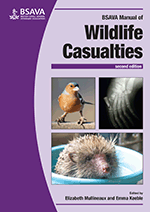
Full text loading...

This chapter covers insectivores (moles and shrews), rodents (voles, rats and mice) and beavers. These species include many that are relatively rare due to habitat destruction, and those that are an important indicator of environmental change. They may be presented following a cat attack or nest disturbance. This chapter covers: ecology and biology; anatomy and physiology; capture, handling and transportation; clinical assessment; first aid and hospitalization; anaesthesia and analgesia; specific conditions; therapeutics; husbandry; rearing of young; rehabilitation and release; and legal considerations.
Other insectivores and rodents, Page 1 of 1
< Previous page | Next page > /docserver/preview/fulltext/10.22233/9781910443316/9781910443316.14-1.gif

Full text loading...











